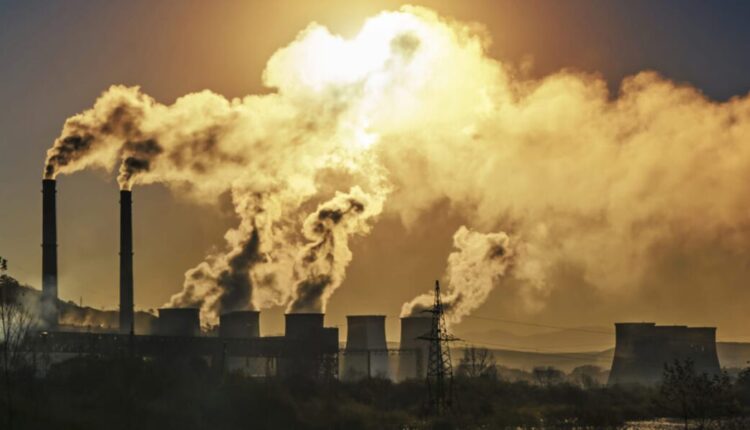There are no signs of a decline in global CO2 emissions which remain at record levels. It is the forceful affirmation from which the new annual report of the Global Carbon Project (GCP) alliance, published this Friday, starts. The report also sends out a clear warning: if current levels of emissions persist, there is now a 50% chance that global warming of 1.5°C will be exceeded in nine years.
The new report projects a global total of CO2 emissions of 40.6 billion tons (GtCO2) in 2022. This is due to fossil CO2 emissions that are projected to increase by 1% compared to 2021, reaching 36.6 GtCO2, slightly above 2019 levels prior to the Covid-19 pandemic. It also projects that emissions from changes in land use (such as deforestation) will be 3.9 GtCO2 in 2022.
This year atmospheric CO2 concentrations will reach an average of 417.2 parts per million by 2022, more than 50% above pre-industrial levels. The projection of 40.6 GtCO2 of total emissions in 2022 is close to 2019’s 40.9 GtCO2, which is the highest annual total in history.
CO2 emissions
Projected emissions from coal and oil are above their 2021 levels. With oil being the largest contributor to total emissions growth. The growth in oil emissions can be largely explained by the delay in the recovery of international aviation. After the restrictions due to the pandemic. The average increase peaked at +3% per year during the 2000s. While growth over the past decade has been around +0.5% per year.
The 2022 picture among the top emitters is mixed:
Emissions are projected to decline in China (0.9%) and the EU (0.8%) and increase in the US (1.5%) and India (6%). With an increase of 1.7% in the rest of the world combined.
Also Read: Natural farming reduced the cost and increased profit for this farmer of Andhra Pradesh
The report notes that reaching zero CO2 emissions by 2050 would now require a decrease of about 1.4 GtCO2 each year. Comparable to the observed drop in 2020 emissions as a result of the pandemic.
Land and ocean continue to absorb around half of the CO2 emissions. And sinks continue to increase in response to increasing atmospheric carbon. However, climate change reduced this growth by 4% (ocean sink) and 17% (land sink) during the decade 2012-2021.
Act now
The report has been presented at COP27 in Egypt. “This year we see another rise in global fossil CO2 emissions, when we need a rapid decline,” Professor Pierre Friedlingstein said. “There are some positive signs. But the leaders meeting at COP27 will need to take significant action if we are to have any chance of limiting global warming to close to 1.5°C,” he noted.
Corinne Le Quéré, Royal Society Research Professor in UEA’s School of Environmental Sciences, noted:
“Our findings reveal turbulence in emissions patterns this year as a result of the pandemic and global energy crises. We are at a tipping point and we must not allow global events to distract us from the urgent and sustained need to reduce our emissions to stabilize the global climate and reduce cascading risks.”
The Global Carbon Budget 2022 report, produced by an international team of more than 100 scientists. Examines both carbon sources and sinks. It provides a peer-reviewed annual update. Based on established methodologies in a fully transparent manner.
Contact us:
If farmers want to share information or experiences related to farming with us. Then they can do this by calling us on the phone number 9599273766 or by writing an email to [email protected]. Or by sending your recording. Through Kisan of India, we will convey your message to the people. Because we believe that if the farmers are advanced then the country is happy.



